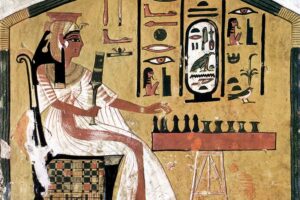Of all the kings of the Middle Ages, the end of William the Victorious was undoubtedly the most abominable.
21 years after he conquered England in 1066, he suffered a gash on his abdomen during a horse ride. After two months in a hospital bed, he died at his home near Rúðuborg in France.
The king’s two older sons were abroad and the youngest son was used to the dead, so the servants ransacked Vilhjálm’s home, stripped him of his clothes and left the body naked on the floor. It lay there for several days before some nobleman had the body driven in a cart to the monastery in Caen.
Grave robbers scattered William’s remains, but the femur is still buried in the Saint-Ètienne Abbey in Caen.
The body had barely entered the monastery garden when the monastery caught fire.
The king, whose body was now well “ripened”, was therefore kept for several days before the monks took it into the church for burial.
A grave was taken under the church floor and the Norman nobles were invited to the funeral.
When the body was to be placed in the stone coffin, it had swollen up. A few monks tried to stuff it into the coffin, but then the king’s stomach burst and the entrails gushed out and spread over the church floor.
The stench was so terrible that the guests fled outside. In the end, however, the monks managed to place the body in the coffin, and the victorious Vilhjálmur finally got to rest in peace.






